Transform Your Home with Stunning Terracotta Floor Tiles: An Expert Guide
Discover the Distinctive Characteristics and Advantages of Terracotta Tiles
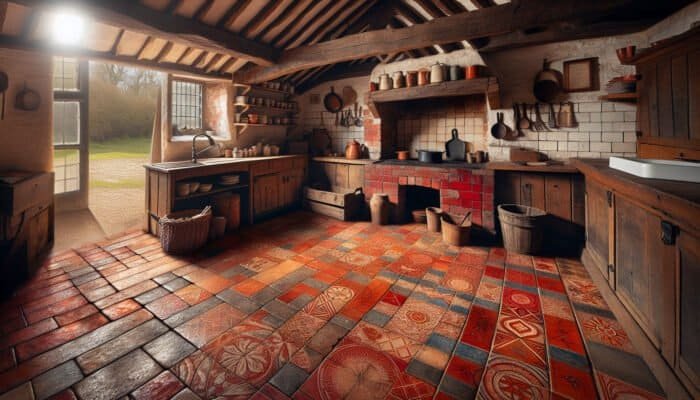
Terracotta tiles represent an exceptional flooring choice crafted from natural clay. This material undergoes shaping and firing at elevated temperatures, resulting in a robust yet visually appealing product. Renowned for their warm earthy tones, these tiles impart a rustic charm to various interiors, whether traditional or contemporary. The colour range of terracotta spans from deep reds to soft ochres, making it a preferred selection among homes throughout the UK, especially in rural and heritage-style residences. Additionally, the porous nature of terracotta enables it to absorb moisture, rendering it suitable for kitchens and bathrooms, provided it is correctly sealed to avert potential water damage.
Pro Tip: Must-Have Products for the Daily Maintenance of Your Terracotta Tiles
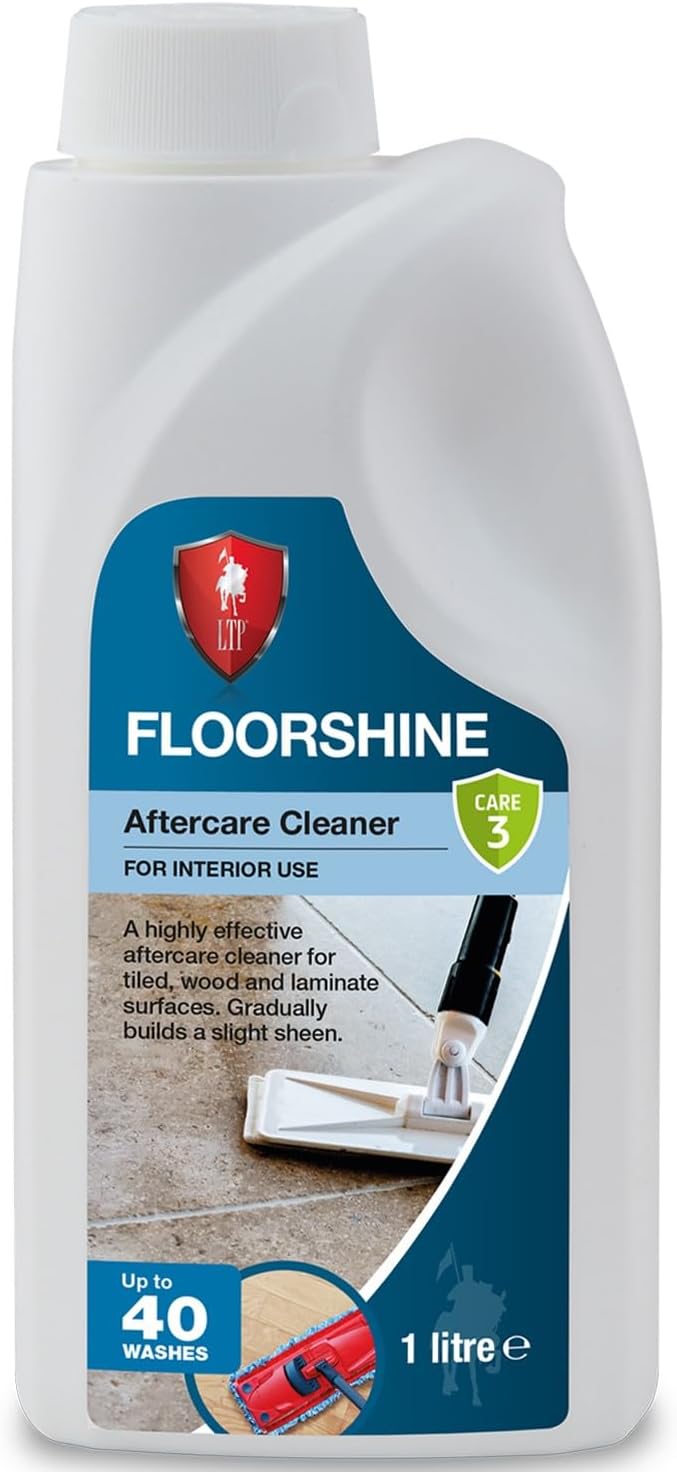
LTP Floorshine
|
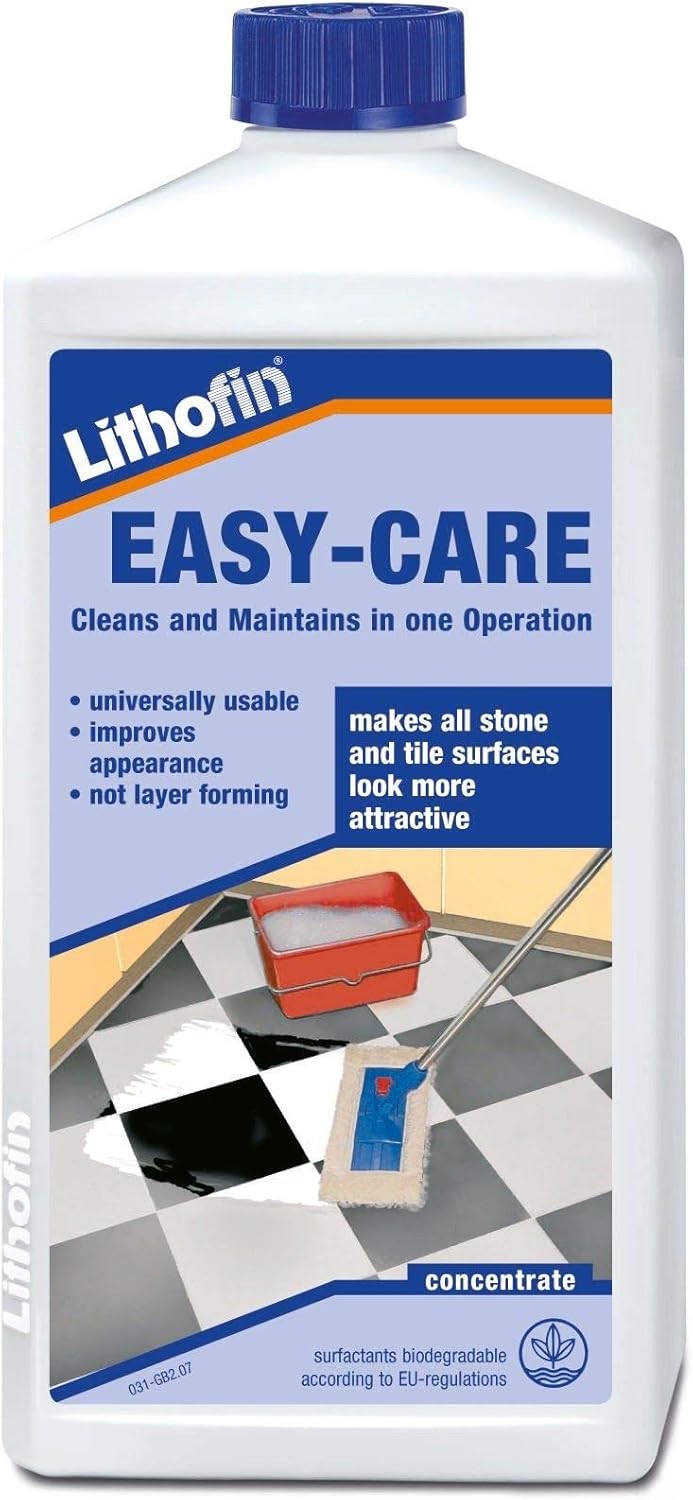
Lithofin Easy Care
|
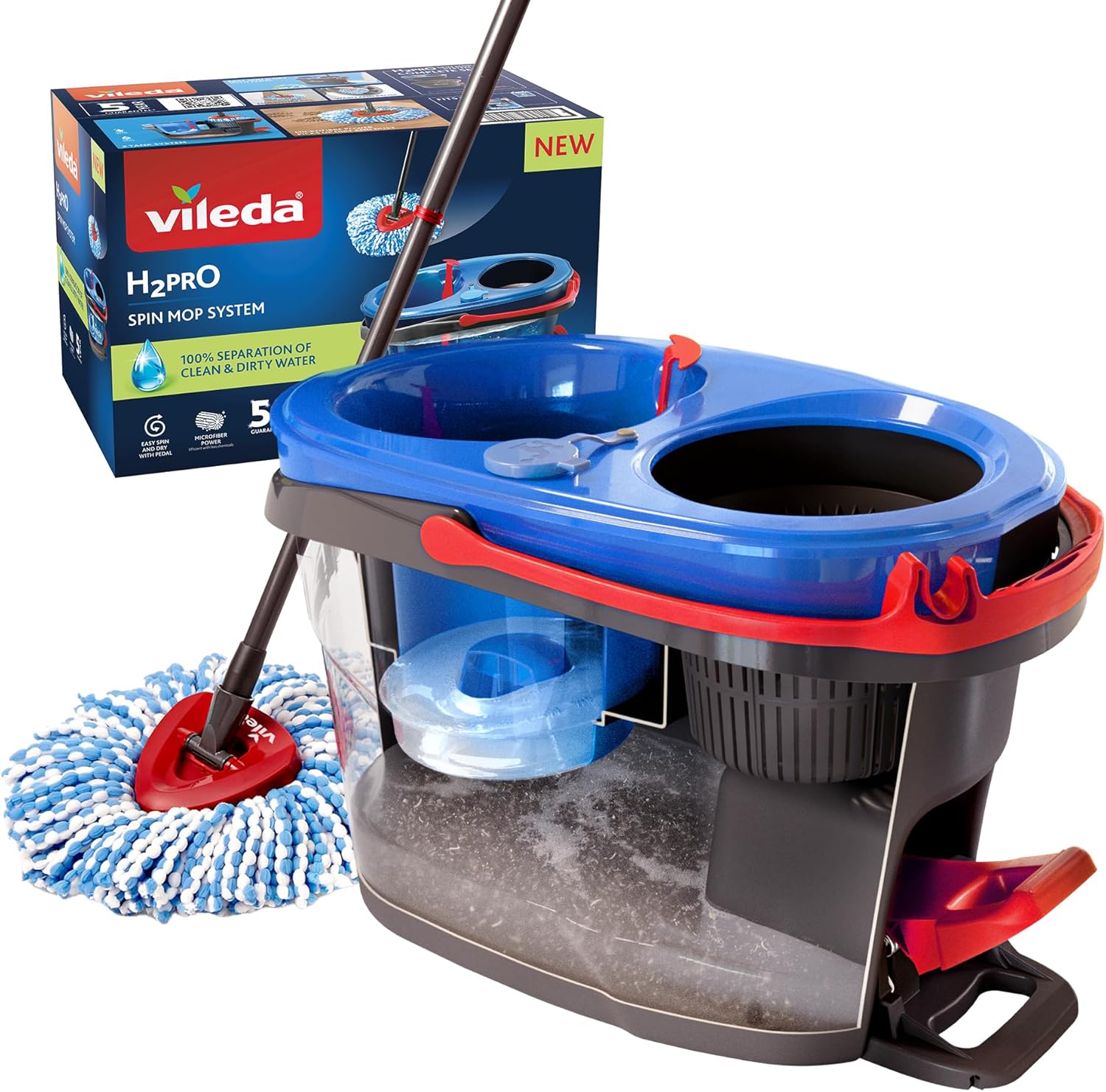
Vileda H2PrO Spin Mop System
|
Within the United Kingdom, terracotta tiles are frequently used in older buildings, amplifying the character and historical significance of these spaces. Homeowners admire the way these tiles gracefully age, developing a unique patina that narrates a story of their installation and use over the years. The tactile sensation of terracotta also provides comfort underfoot, making it an attractive option for communal areas such as living rooms and dining spaces.
Unveiling the Key Benefits of Selecting Terracotta Flooring
The benefits of incorporating terracotta flooring extend far beyond its beautiful appearance. One of its standout advantages is its remarkable durability; terracotta is exceptionally robust and can endure heavy foot traffic, making it an ideal choice for bustling households, particularly in urban hubs like London or rural areas with frequent outdoor activity. Additionally, terracotta is a sustainable choice; being crafted from natural clay, it contributes to reducing environmental impact.
The enchanting appeal of terracotta floors also enriches the atmosphere of any setting. Their organic aesthetic complements a myriad of interior design themes, from rustic farmhouse charm to sleek, modern minimalism. Furthermore, terracotta's thermal properties are impressive—these tiles can retain heat, offering a warm surface during the colder months, which can significantly reduce heating costs in homes, particularly during the frigid winters typical of the UK.
Another crucial aspect is the character that terracotta tiles infuse into any environment. Each tile is distinctive, with its colour variations and markings contributing to a rich tapestry of texture and style. This individuality makes terracotta an outstanding choice for homeowners seeking to cultivate a unique space that reflects their personal style and preferences.
Identifying Common Challenges Linked to Terracotta Tiles
Despite its numerous advantages, terracotta flooring does present certain challenges. Over time, these tiles may exhibit signs of wear and tear, resulting in dullness, staining, or even cracking. The porous nature of terracotta allows it to absorb spills and moisture, which can lead to discolouration if not addressed in a timely manner. Additionally, regular exposure to dirt and grime can dull the surface, making consistent maintenance vital to uphold its aesthetic appeal.
Another prevalent issue is efflorescence, a white, powdery substance that may form on the tile surface when moisture evaporates. This can be especially problematic in areas with high humidity or where water leaks occur. Regular cleaning and sealing are essential to mitigate these challenges, necessitating a commitment to upkeep to maintain the tile's pristine condition.
Moreover, not all cleaning agents are suitable for terracotta. Harsh chemicals can damage the tile surface, resulting in further complications in the future. Therefore, it is crucial to comprehend the specific requirements and vulnerabilities of terracotta flooring to maintain its integrity and appearance.
The Importance of Polishing Terracotta Tiles for Durability
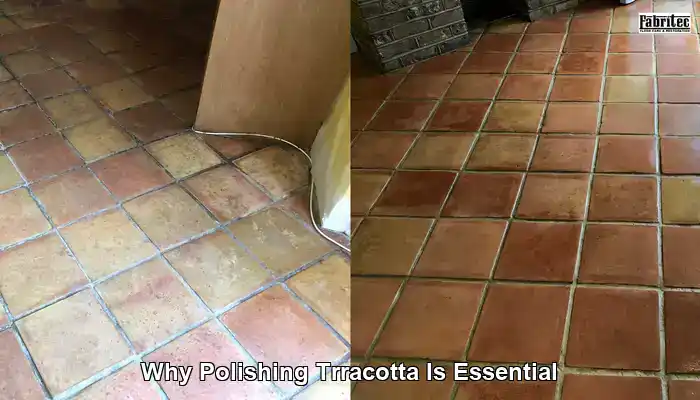
Elevating the Visual Appeal of Your Flooring
Polishing terracotta tiles is a transformative process that significantly enhances their visual allure. The polishing technique reveals the inherent beauty of the clay, showcasing vibrant colours and a rich texture that can revitalise even the dullest surfaces. When light reflects off a polished surface, it creates a warm glow that brightens the room and elevates the overall atmosphere of the space.
In high-traffic zones such as hallways and kitchens, where the floor may experience frequent use and potential staining, regular polishing becomes essential. A polished finish not only enhances the aesthetic qualities of the tiles but also assists in concealing minor flaws, giving the floor a fresh appearance akin to new flooring. In historic homes, where character is paramount, a polished terracotta floor can serve as a stunning focal point that amplifies the overall charm of the property.
The visual benefits of polishing are especially apparent in homes where terracotta tiles are a central design element. For instance, in a quaint cottage nestled in the Lake District, polished terracotta floors can beautifully harmonise with wooden beams and stone accents, creating a seamless integration of natural elements. This is why many homeowners in the UK prioritise regular polishing as part of their floor maintenance regimen, ensuring their terracotta tiles continue to gleam and attract admiration.
Establishing a Protective Layer for Your Floors
A crucial yet often neglected benefit of polishing terracotta tiles is the protective barrier it establishes. When tiles are polished, a seal forms that not only enhances their appearance but also protects against moisture and stains. This is particularly vital for terracotta, which, due to its porous nature, is susceptible to absorbing spills and dirt if left unprotected.
In London, numerous homes feature terracotta flooring, especially in areas with traditional architecture. In such locations, where rain and humidity can be prevalent, having polished terracotta tiles can prevent water damage and prolong the lifespan of the flooring. Regular polishing acts as a shield against dirt, dust, and debris, simplifying the cleaning process and maintenance.
Furthermore, the polished surface can resist scratches and wear from foot traffic. This is particularly advantageous in households with pets or active families, where floors may undergo significant use. By investing in a service for polishing terracotta floor tiles, homeowners can ensure their flooring remains vibrant and protected for many years, thereby minimising the need for costly repairs or replacements.
Extending the Lifespan of Your Flooring with Routine Care
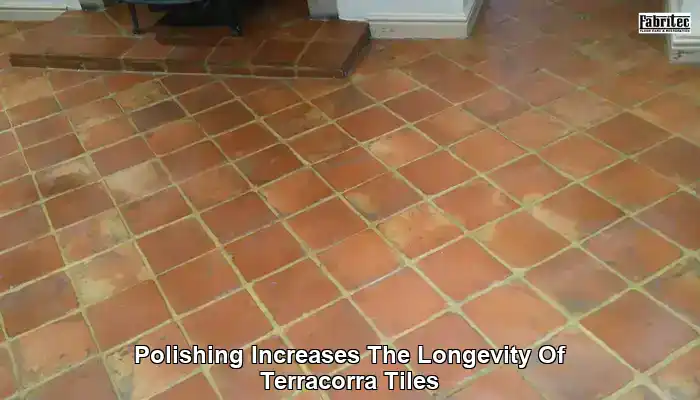
Regular polishing of terracotta tiles is essential not only for enhancing aesthetics but also for prolonging the lifespan of the flooring. By eliminating dirt and grime buildup, polishing helps prevent the deterioration of the tiles over time. This is crucial because neglecting maintenance can lead to irreversible damage, necessitating expensive replacements.
Moreover, polished terracotta floors are less susceptible to cracking and chipping. In regions with fluctuating temperatures, such as the UK, where winters can be harsh and summers quite warm, maintaining a polished surface can help reduce temperature-related damage. By creating a smooth, sealed surface, the tiles are better equipped to endure these environmental stresses.
Grasping the long-term advantages of investing in a service for polishing terracotta floor tiles is vital for homeowners. It not only preserves the beauty and integrity of the flooring but also offers financial savings over time. Regular maintenance through polishing can help avoid the costs associated with repairs or replacements, making it a wise investment for any property owner eager to uphold the charm and character of their terracotta floors.
Crucial Steps for Preparing Your Terracotta Tiles for Polishing
Thoroughly Cleaning Your Tiles for Optimal Results
Before embarking on the polishing process, the initial step is to ensure the tiles are meticulously cleaned. A well-prepared surface is essential for achieving the best results when polishing terracotta, as any remaining dirt or grime can hinder the effectiveness of the polishing products. Start by sweeping or vacuuming the area to remove loose debris, followed by mopping with a pH-neutral cleaner specifically formulated for terracotta tiles. This will aid in lifting any ingrained dirt without compromising the tile surface.
In parts of the UK with high outdoor access, such as rural or coastal areas, it is crucial to pay special attention during this cleaning phase, as terracotta can accumulate mud and organic debris. For particularly dirty tiles, a gentle scrub with a soft-bristled brush may be needed to ensure all contaminants are eliminated. After cleaning, ensure the tiles dry completely before proceeding to polish, as moisture can disrupt the application and bonding of the polish.
Consider investing in a steam cleaner for an even deeper clean. Steam cleaning terracotta tiles not only sanitises the surface but also assists in lifting stubborn stains without the use of harsh chemicals. This eco-friendly method ensures that the tiles are not subjected to harmful substances, preserving both their quality and the health of your household.
Repairing Damaged Sections Prior to Polishing
Before polishing, it is vital to address any damaged areas of the terracotta tiles. Cracks, chips, or other imperfections can detract from the flooring's beauty and may worsen over time if left unresolved. Begin by inspecting the entire floor for any signs of damage; this is particularly important in older homes where natural wear and tear may be more evident.
For minor chips or cracks, consider using a terracotta repair kit, which typically includes a colour-matched filler that can seamlessly blend with the existing tiles. Apply the filler according to the manufacturer’s guidelines, ensuring it cures completely before moving on to the polishing stage. In cases of more significant damage, such as large cracks or missing pieces, it may be prudent to consult a professional who can assess the situation and recommend the best course of action.
After repairs, it is crucial to ensure the surface is smooth and even. Uneven surfaces can lead to a patchy appearance after polishing, so take the time to sand down any raised areas and ensure everything is level. This meticulous attention to detail will pay off, resulting in a polished finish that appears flawless and professionally executed.
Selecting the Appropriate Products for Effective Polishing
Pro Tip: Recommended Products for Sealing Terracotta Tiles
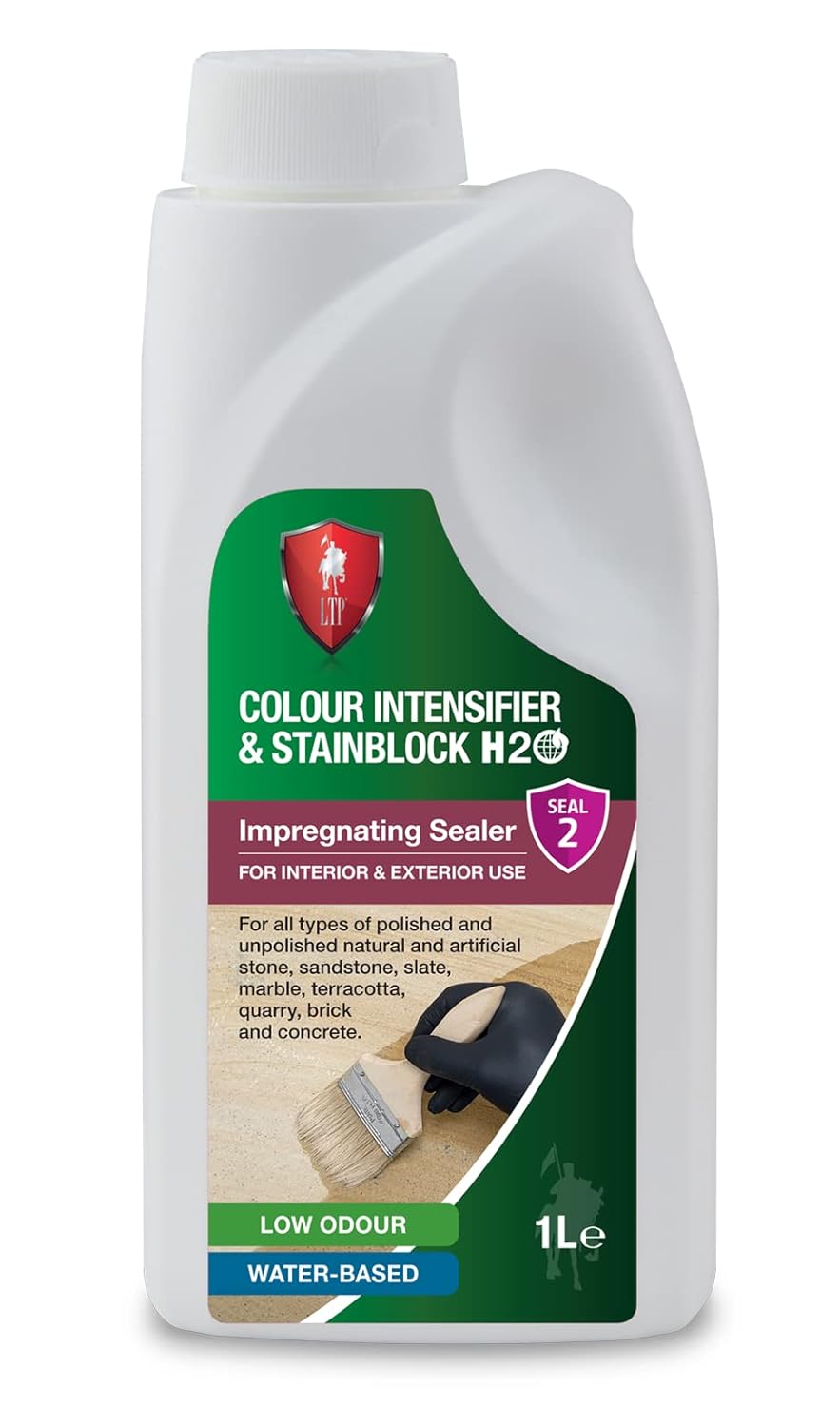
LTP Colour Intensifier
& Stainblock H20
Before applying the Satin or
Gloss Topical Sealer
|
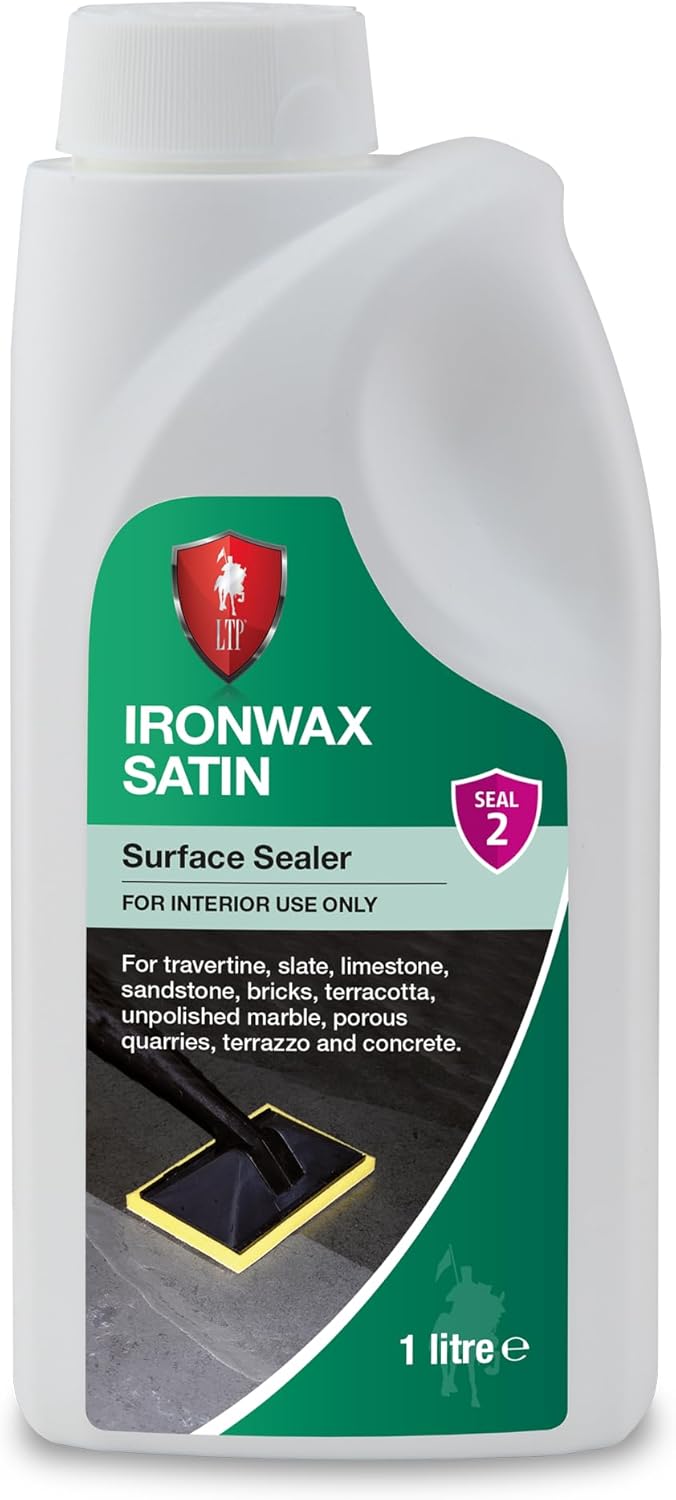
LTP Ironwax Satin
Provides a mid-sheen finish
|
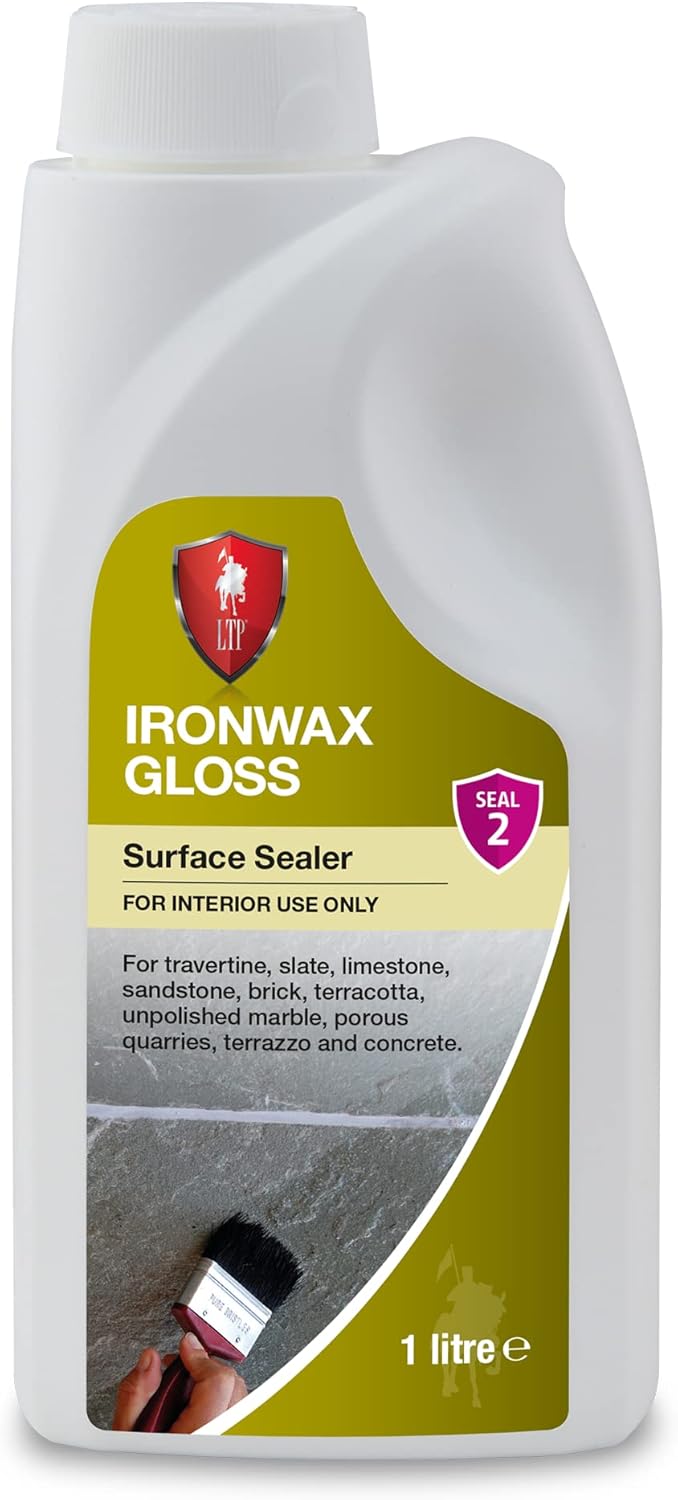
LTP Ironwax Gloss
Delivers a glossy finish
|
Choosing the right polishing products for terracotta tiles is essential for achieving the desired finish and ensuring the longevity of the flooring. It is imperative to select products specifically formulated for terracotta, as generic floor polishes may contain chemicals that can harm the tiles. Look for products labelled as safe for use on natural clay surfaces, ensuring they enhance rather than damage your flooring.
In the UK market, several reputable brands offer high-quality polishing solutions for terracotta tiles. Some products include natural waxes or sealants that not only provide a shine but also protect the surface from moisture and stains. When selecting a polish, consider whether you prefer a high-gloss or satin finish, as this will ultimately influence the overall aesthetic of your flooring.
Before committing to a product, it is beneficial to read reviews and seek recommendations from professionals or local suppliers. Many home improvement stores in the UK also provide expert guidance on the best products for terracotta maintenance. Always conduct a patch test on a small, inconspicuous area to ensure compatibility with your tiles and avoid any adverse reactions.
Safeguarding Surrounding Areas During the Polishing Process
Preparing the area surrounding the terracotta tiles before polishing is a crucial yet often overlooked step in the process. Given that polishing can generate dust and debris, it is essential to protect adjacent surfaces, including walls and furniture, to prevent damage. Utilise drop cloths or plastic sheeting to cover furniture and areas that might be exposed during the polishing process.
Additionally, consider applying painter’s tape along the edges of the tiles to create a clean line, preventing any polish from inadvertently spilling onto other surfaces. This preparation will save time and effort during the cleaning process after polishing and ensure a professional-looking finish.
Furthermore, remove any items, such as rugs or potted plants, from the area to create a clear workspace. This not only facilitates easier access to the tiles but also prevents potential damage to your belongings during the polishing process. By taking the time to safeguard surrounding areas, homeowners can ensure that the focus remains on the terracotta tiles, resulting in a polished finish that truly shines.
Conducting a Small Area Test Before Full Application
Before applying polish to the entire surface, testing a small, inconspicuous area is a crucial step in the preparation process. This trial run allows you to assess the effectiveness of the selected polishing product while ensuring it does not react unfavourably with the terracotta. Apply the polish according to the product instructions and observe the results after it has dried.
In the UK, where varying humidity and temperature levels can impact how materials react, this testing phase is vital. You want to confirm that the polish enhances the colour and texture of the tiles without causing any discolouration or adverse reactions. If the test area yields the desired results, you can confidently proceed with polishing the entire floor.
If the test area does not produce satisfactory results, consider trying an alternative product or consulting with professionals who specialise in terracotta maintenance. Ensuring that you are pleased with the outcome of this test will lead to a more satisfying and enduring finish across the entire flooring space.
Detailed Instructions for the Polishing Procedure
Applying Polish to Your Terracotta Tiles: A Comprehensive Guide
Once the preparation steps are complete, it’s time to apply the polish to your terracotta tiles. Begin by ensuring that the area is clean and dry, as any moisture can interfere with the application. Use a clean cloth or applicator pad to evenly distribute the polish across the tile surface. It’s crucial to adhere to the manufacturer’s instructions regarding the amount of polish to use; applying too much can lead to a thick, uneven finish.
Start in one corner of the room and methodically work your way across the floor to ensure that the polish is applied uniformly. Use circular motions or long strokes, depending on the product’s recommendations for application. This technique helps prevent streaking and ensures that the polish penetrates the tile’s surface effectively.
For larger areas, consider using a mechanical polisher, which can save time and effort while providing a consistent finish. However, exercise caution to adjust the speed and pressure settings appropriately, as excessive force can damage the tiles. After application, allow the polish to set according to the product guidelines to ensure optimal results.
Buffing Your Terracotta Tiles for a Flawless Shine
Buffing is a critical step in the polishing process that can significantly enhance the final appearance of your terracotta tiles. Whether you opt to buff by hand or utilise a polishing machine, this step is essential for achieving the high-gloss finish that many homeowners desire. If buffing by hand, use a clean, dry cloth and work in small sections while applying moderate pressure to achieve optimal results.
When using a mechanical buffer, ensure it is fitted with an appropriate pad for terracotta surfaces. This will help prevent scratches and damage while providing a superior shine. As you buff, monitor the surface to ensure an even shine is achieved across the entire floor. For best results, it may be necessary to revisit particularly dull areas multiple times to ensure they shine.
Buffing not only enhances the appearance of your terracotta tiles but also helps to smooth out any inconsistencies left from the polishing application. Once completed, take a moment to admire your work; a well-buffed floor will look revitalised and inviting, ready to showcase the beauty of your home.
Allowing Adequate Time for Drying and Curing
After polishing and buffing, it’s essential to allow the polish to dry and cure thoroughly. This process typically varies depending on the product used; however, a general guideline is to let the polish sit undisturbed for several hours or as specified by the manufacturer. During this time, avoid walking on the tiles or placing any furniture back into the area, as this can smudge or damage the freshly polished surface.
Curing time is critical for ensuring that the protective layer forms effectively, significantly enhancing the longevity of both the polish and the tiles themselves. In humid conditions, drying may take longer, so it’s advisable to keep the area well-ventilated to facilitate the drying process.
After the specified curing time, inspect the floor for any areas that may require a touch-up. If everything looks satisfactory, your terracotta tiles are now beautifully polished and ready for enjoyment. Regular upkeep following this process will keep your tiles looking their best, showcasing the inherent charm and character that terracotta brings to your home.
Expert Maintenance Tips for Your Polished Terracotta
Implementing Regular Cleaning Practices
To maintain the immaculate appearance of your polished terracotta tiles, regular cleaning is imperative. Unlike conventional flooring types, terracotta necessitates gentle care to preserve its finish and prevent damage. Utilise a soft mop and a pH-neutral cleaner specifically designed for terracotta to avoid stripping away the polish.
When cleaning, avoid abrasive materials or harsh chemicals, as these can lead to scratches or diminish the polished surface. Instead, focus on damp mopping and dry dusting to remove everyday dirt and debris. For deeper cleans, consider steam cleaning periodically to lift stubborn stains without exposing the tiles to harmful substances.
In bustling households, where foot traffic can quickly accumulate dirt, it is beneficial to establish a regular cleaning schedule. Depending on usage, this may involve light cleaning daily, with more thorough cleaning weekly. By consistently caring for your polished terracotta tiles, you can ensure they continue to radiate their natural beauty for years to come.
Protecting Your Floors from Potential Damage
Protection is vital to preserving the longevity of your polished terracotta tiles. To prevent scratches and wear, consider placing mats at entryways to trap dirt and moisture before it reaches your floors. This simple measure can significantly reduce the debris that gets ground into the tiles, helping to maintain their polished appearance.
Additionally, it’s prudent to use felt pads under furniture legs to prevent scratching when moving items around. Heavy furniture can leave indentations over time if not properly protected, so these precautions can safeguard your investment in terracotta flooring. Avoid dragging furniture across the tiles; instead, lift items when relocating them to prevent unintended damage.
In homes with pets, consider designating areas where pets can access without risking scratches on the floors. Regular grooming can also help, as pet hair can contribute to dust and dirt accumulation on your floors. By proactively addressing these aspects, you can prolong the life and visual appeal of your polished terracotta tiles.
Scheduling Regular Re-polishing for Continued Shine
Maintaining the luster of your terracotta tiles often necessitates periodic re-polishing. Over time, the protective layer can wear thin due to foot traffic and cleaning, diminishing the tiles’ shine. Depending on usage levels, it may be necessary to re-polish your tiles annually or biannually to keep them looking their best.
When re-polishing, ensure the tiles are thoroughly cleaned before applying additional polish. Following the same steps as the initial polishing process will help maintain a consistent finish across the flooring. If you notice areas that appear particularly dull, consider spot polishing to target these sections, ensuring an even appearance throughout the space.
Investing in the service for polishing terracotta floor tiles can be a valuable option if you prefer professional assistance. Experts will have the tools and experience necessary to achieve a high-quality finish, providing peace of mind that your flooring is in capable hands. Regardless of the approach, maintaining a regular polishing routine will ensure your terracotta flooring continues to shine brightly for years to come.
Benefits of Hiring Professional Polishing Services
Identifying When to Seek Professional Assistance
While many homeowners can maintain their terracotta flooring through regular cleaning and occasional polishing, there are circumstances when enlisting a professional service becomes essential. If your terracotta tiles have sustained substantial damage, such as deep scratches or extensive discolouration, a professional can evaluate the situation and recommend a comprehensive restoration strategy.
Moreover, for larger areas, seeking the help of a professional can save time and ensure that the task is completed efficiently and effectively. Professionals possess the expertise and specialised equipment required to achieve a flawless finish, which can be challenging to replicate when working on extensive spaces alone.
For homeowners in the UK with busy lifestyles, hiring a professional service can also be a practical choice. With their assistance, you can maintain the allure of your terracotta tiles without dedicating your valuable time to the task. Investing in professional polishing services can yield long-lasting results that enhance your home’s aesthetic and value.
What to Anticipate When Hiring Professional Services
When you hire professionals to polish your terracotta floors, you can anticipate a comprehensive assessment followed by a meticulous cleaning process. Experts will evaluate the condition of the tiles and identify any areas that may require repair before polishing begins. This ensures that the final outcome is nothing short of exceptional.
Professionals will utilise high-quality, industry-standard products and techniques to polish your tiles, ensuring a consistent and even finish. You can also expect them to provide guidance on maintaining your flooring after polishing is complete, offering tips tailored to the specific needs of terracotta.
Furthermore, reputable polishing services often include a warranty for their work, providing reassurance that your investment is protected. Ultimately, hiring professionals can help ensure that your terracotta floors are polished to perfection, saving you time and delivering impressive results.
Selecting the Right Professional Polishing Service for Your Requirements
Choosing the ideal professional service for polishing terracotta floor tiles requires careful consideration and research. Begin by seeking recommendations from friends, family, or local suppliers who have experience with reputable services. Online reviews and testimonials can also offer valuable insight into the quality of a company’s work.
When assessing potential services, consider their level of experience, specialisation in terracotta flooring, and the range of services offered. A trustworthy company will be transparent about their process, the products they use, and any warranties or guarantees they provide. It’s also beneficial to obtain multiple quotes to compare pricing while ensuring you comprehend what is included in each service.
In the UK, numerous experienced companies specialise in floor polishing. Take the time to find one that aligns with your needs and budget. A thorough selection process will lead to a satisfactory experience, resulting in beautifully polished terracotta tiles that elevate your home.
Understanding the Financial Aspects of Professional Polishing Services
Understanding the costs associated with professional polishing services for terracotta tiles is crucial for effective budgeting. Prices can vary significantly based on factors such as the size of the area being polished, the extent of cleaning and repairs needed, and the specific products used. Generally, larger areas will incur higher costs, but keep in mind that investing in quality service can yield long-lasting benefits.
Most professional services will provide a detailed quote outlining the scope of work, including any necessary repairs or additional treatments. Be sure to inquire about any hidden fees or charges that may not be included in the initial estimate. This transparency will help you avoid unexpected costs and facilitate better financial planning.
It’s advisable to compare pricing from different service providers to ensure you receive the best value for your investment. Remember, the cheapest option isn’t always the best; consider the company’s reputation, experience, and customer feedback when making your decision. Understanding the costs involved will empower you to make informed choices regarding the maintenance of your terracotta flooring.
Cost Factors for Polishing Terracotta Tiles: A Comprehensive Overview
Key Elements Influencing Pricing
Several factors affect the cost of polishing terracotta tiles, making it essential to understand what contributes to the pricing structure. The condition of the tiles is a significant determinant; if extensive cleaning or repairs are required before polishing, this can escalate the overall cost. Tiles that have suffered considerable wear, stains, or damage will need extra care and resources, potentially impacting pricing.
The size of the area being polished also plays a critical role. Larger spaces naturally require more time and materials, affecting the final cost. In settings such as expansive open-plan homes, this factor can be significant, especially in the UK, where many homes feature extensive terracotta flooring.
The desired finish can likewise influence pricing. High-gloss finishes may necessitate additional application steps or specialised products, resulting in higher costs compared to satin finishes. When considering polishing services, obtaining detailed quotes from various providers is essential to ensure that you fully grasp the breakdown of costs.
Effective Budgeting for Terracotta Maintenance
Effective budgeting for the upkeep of terracotta flooring, including polishing, is crucial for homeowners looking to maintain the beauty and integrity of their tiles. Establishing a regular maintenance schedule can help spread costs over time, ensuring that you’re prepared for periodic polishing and repairs as necessary.
Consider setting aside a dedicated fund for floor maintenance, which can alleviate the financial burden associated with larger, unexpected repairs. By proactively budgeting, homeowners can ensure their terracotta floors remain in excellent condition while avoiding costly surprises in the future.
Additionally, take advantage of seasonal promotions or discounts offered by polishing services. Many companies may provide competitive pricing during off-peak seasons, making it an excellent opportunity to invest in maintaining your flooring at a reduced cost.
Comparing Polishing Costs for Optimal Value
When searching for the best value for polishing terracotta tiles, obtaining multiple quotes from different service providers is vital. This practice allows you to compare not only the prices but also the scope of services offered. Look beyond the bottom line; evaluate what each service includes, such as repairs, cleaning, and the type of products used.
Reading customer reviews and testimonials can also provide insight into the quality of service, helping you make an informed choice. In the UK, many reputable companies specialise in terracotta polishing, so comparing costs can lead to significant savings while ensuring a high-quality finish for your flooring.
Don’t hesitate to ask providers about their experience with terracotta flooring, as this can impact the overall quality of the service you receive. With diligent research, you can find a service that fits your needs and budget while maintaining the beauty of your terracotta tiles.
Long-term Financial Benefits of Polishing Services
Investing in regular polishing services for terracotta flooring can yield significant long-term savings. Well-maintained tiles are less likely to suffer damage, which can be expensive to repair or replace. By ensuring that your terracotta tiles are polished and protected, homeowners can avoid the costs associated with extensive repairs due to neglect.
Moreover, polished surfaces are easier to clean and maintain, reducing the need for harsh chemical cleaning products that may accumulate costs over time. This ease of maintenance not only saves money but also contributes to a healthier home environment.
Understanding the long-term cost benefits of investing in a service for polishing terracotta floor tiles can empower homeowners to make informed decisions regarding their flooring. With careful planning and regular maintenance, terracotta tiles can remain a stunning asset to your home for many years.
Addressing Frequently Asked Questions About Terracotta Flooring
What materials are essential for making terracotta tiles?
Terracotta tiles are crafted from natural clay that is shaped, dried, and fired at high temperatures. This process results in a durable and visually appealing product known for its warm colours.
How often should I polish my terracotta tiles?
It is generally recommended to polish terracotta tiles annually; however, depending on foot traffic and wear, some homeowners may find that semi-annual polishing is beneficial.
Is vinegar a suitable cleaner for terracotta tiles?
Using vinegar on terracotta tiles is not advisable, as the acidity can damage the surface. Instead, opt for a pH-neutral cleaner specifically designed for terracotta.
What are effective ways to protect my terracotta floors?
To safeguard terracotta floors, use mats at entryways, felt pads under furniture, and avoid abrasive cleaning products. Regular maintenance and polishing can also help extend their lifespan.
What should I do if my terracotta tiles develop cracks?
For minor cracks, utilise a terracotta repair kit to fill and disguise the damage. In cases of significant harm, consulting a professional is recommended for a thorough assessment and repair.
Are professional polishing services worth the investment?
Yes, professional polishing can provide a superior finish and prolong the life of your terracotta tiles. Their expertise and equipment often yield better results than DIY methods.
Can I polish terracotta tiles by myself?
While it is possible to polish terracotta tiles independently, hiring a professional ensures a high-quality finish and reduces the risk of damage during the process.
How can I tell if my terracotta needs polishing?
If your tiles appear dull, stained, or lack their original shine, it’s a clear indication that they likely need polishing. Regular cleaning and inspection can help identify when it’s time.
What types of finishes can I choose for my terracotta tiles?
Terracotta tiles can be polished to achieve various finishes, including high-gloss, satin, and matte. The selected finish will depend on your aesthetic preferences and the product used.
Is terracotta flooring suitable for bathrooms?
Yes, terracotta flooring can be appropriate for bathrooms, provided it is properly sealed to prevent water damage. Regular maintenance is essential in moisture-prone areas.
The post Revive Your Terracotta Floors: Proven Polishing Techniques from the Pros appeared first on https://tilecleaningsurrey.co.uk
The Article Terracotta Floor Polishing: Expert Techniques to Revive Shine appeared first on https://fabritec.org
The Article Terracotta Floor Polishing Techniques for a Brilliant Shine Was Found On https://limitsofstrategy.com

